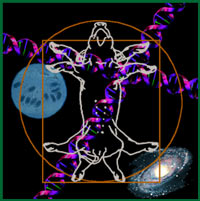
The serendipity of soapy-tailed pigs
Back from unspeakable routes, I use a finger to trace discovery’s endless shore for you. I will change this past failure into a dream; and tomorrow I will traverse the whole length of divination’s dogged slopes again.
For the long quarrel between tradition and invention, between order and theory, is but the serendipity of soapy-tailed pigs. The idea will come, and we shall not dwell forever in these oft-rooted lands.
PIGMY, n.: One of a tribe of very small men found by ancient travelers in many parts of the world, but by modern in Central Africa only. The Pigmies are so called to distinguish them from the bulkier Caucasians — who are Hogmies.
TRICHINOSIS, n.: the pig’s reply to proponents of porcophagy. Moses Mendlessohn having fallen ill sent for a Christian physician, who at once diagnosed the philosopher’s disorder as trichinosis, but tactfully gave it another name. “You need and immediate change of diet,” he said; “you must eat six ounces of pork every other day.” “Pork?” shrieked the patient — “pork? Nothing shall induce me to touch it!” “Do you mean that?” the doctor gravely asked. “I swear it!” “Good!” said the doctor, “then I will undertake to cure you.”
Ambrose Bierce (1842-1914?)
U.S. author and journalist. The Devil’s Dictionary (1906).
A swine flu epidemic threatens the United States.
Gerald Ford (1913-1926)
38th President of the United States (1974-1977), in a public address on March 24, 1976 announcing the anticipated threat posed by a Swine Flu epidemic.
PIGVISION explores collaborative research in a field where few artists have dared to enter, and where artistic expertise is yet unknown to the experts: the pig industry. With every collaborative research project on topics such as pig behavior, pig housing systems, pig nutrition and so on, another veil is lifted, a new glance permitted, to continue the discourse on art and science.
Raymond Rohner
A former agriculture science student in Switzerland who then studied Fine Art at the Tasmanian School of Art in Hobart, Australia. PIGVISION (1993), a portfolio of concrete research projects, set within the field of pig science intended to foster active debate about the relationship between art and science.
Sus scrofa
Carolus Linnaeus (1707-1778)
Swedish botanist, and developer of the binomial system of taxonomic classification for plants and animals which is still in use today. Systema Naturae, 10th edition, (1758).
I have observed great sagacity in swine, but the short lives we allow them, and their general confinement, prevent their improvement, which would otherwise probably equal that of the dog.
Erasmus Darwin (1731-1802)
British physician, scientist, reformer, and poet whose writing explained organic life in terms of evolution; thus anticipating the later theories on evolution of his grandson Charles. Zoonomia (1794-1796).
Why are we so ignorant that we live in little boxes, and Realtors can sell us something that a pig would be ashamed to live in, really, if a pig could talk and protest? And you don’t protest. You buy. You’re perfectly satisfied, apparently. They’ll give you anything you’ll take. They’ll degrade you to the level of the pig if you don’t look out. And you should look out.
Frank Lloyd Wright (1869-1959)
U.S. architect with a distinctive style based on natural forms. “Straight Talk About Miami Architecture” (November 3, 1955), a speech to the Fashion Group of Miami at the Balmoral Hotel. First published in the Miami Herald on April 1, 1984, as part of an accompanying article by Beth Dunlap entitled “An Original American Genius.”
If the lateral digits are still retained in the Suidae [pigs] it is chiefly owing to the fact that the Hogs live generally in marshy places and on muddy riverbanks, where a broad foot is of great importance for not allowing them to sink into the mud. But if, by some geologic change, their habitat should be transformed into a dry grassy plains, there can be no reasonable doubt that they would readily lose their lateral digits as the Paleotheroids [horse ancestors in Kovalevsky’s view] have lost theirs… in becoming transformed into the monodactyle Horse.
Vladimir Onufreivich Kovalevsky (1842-1843)
Russian born paleontologist, husband of mathematician Sophia Kovalevsky. Both were members of the 19th Century Russian intelligentsia. Philosophical Discussions of the Royal Society of London (1874), from a monograph by Kovalevsky in English, submitted by friend and fellow researcher, T. H. Huxley, for publication by the Royal Society.
What animals dream of I do not know. A proverb for which I am indebted to one of my pupils professes to tell us, for it asks the question: “What does the goose dream of?” and answers: “Of maize.” And “What does the pig dream of?” and answers: “Of acorns.” The whole theory that the dream as the fulfillment of a wish is contained in these two sentences.
Sigmund Freud (1856-1939)
Austrian psychiatrist and the founder of psychoanalysis, who emphasized dreams as keys to the makeup of the individual. He distinguished between the experienced content of a dream and the actual meaning of the dream, which he believed was largely concealed from the dreamer. The Interpretation of Dreams orDie Traumdeutung (1900).

